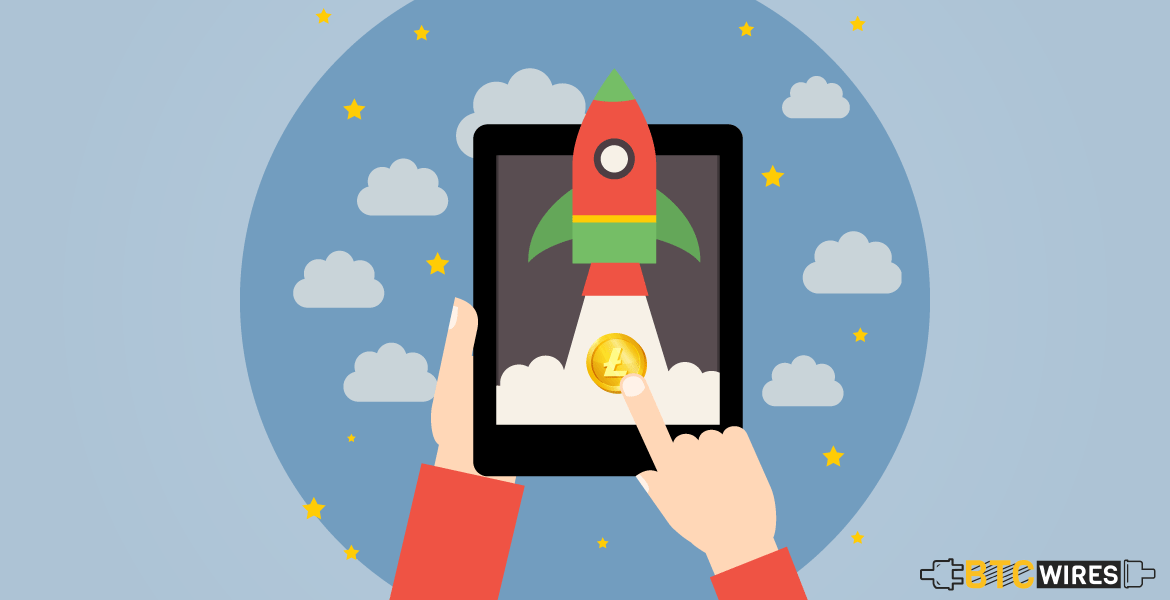Charlie Lee, an ex-employee of tech giant Google, created quite

Charlie Lee, an ex-employee of tech giant Google, created quite a stir in the crypto world when he came out with Litecoin, a fork of the Bitcoin Core Client, as a simpler, and as its name suggests, lighter alternative to the original Bitcoin (BTC). While the internet is all too ready to give you all the reasons to invest in Litecoin ASAP, it is imperative to have a thorough understanding of the coin before moving ahead. To help you out in this quest for information, here’s a complete beginner’s guide to Litecoin :
What is Litecoin?
Litecoin is a cryptocurrency that was developed to serve as a digital currency that would make it possible to use for simpler and lighter transactions. Created as a fork of the Bitcoin Core Client, based upon its open-source codebase, Litecoin is a pioneering altcoin to have made its presence known to crypto enthusiasts. It came three years after the launch of Bitcoin and since its inception in 2011, Litecoin has enjoyed a huge spike in value around 2017. Although it has been affected by the crypto market’s overall bearish lull, it is expected to get back on track again. To answer the question : “what is Litecoin?” , we turn to the official website’s definition for the altcoin:-
“Litecoin is a peer-to-peer Internet currency that enables instant, near-zero cost payments to anyone in the world.”
While it sounds uncannily similar to the definition usually ascribed to Bitcoin, Litecoin has some major differences with Bitcoin as well, often even bettering the record of its coin of origin.
What are the Differences Between Litecoin and Bitcoin?
There are several differences between the two cryptocurrencies because with Litecoin, Charlie Lee was attempting to address the issues of Bitcoin’s long transaction time and low accessibility, among others. Therefore, Litecoin was designed to ensure the following differences:
1. Lower time to process transactions:
Bitcoin takes about 10 minutes to process each transaction while Litecoin takes just about 2.5 minutes. It has a much higher efficiency in handling transactions smartly, largely owing to its effective adoption of the SegWit update.
2. Higher security:
The faster transaction processing ensures a higher degree of security for the network as well. How is that? Well, since transactions get confirmed and validated within the brief period of just around 2.5 minutes, attackers often do not get the time to strike with a double spending attack, where they use the same amount or fund to pay for two completely different transactions.
3. Higher Upper Limit :
Bitcoin has a widely known mark of 21 million, upon reaching which no more Bitcoins will be mined any more. Litecoin has a much higher supply limit, set at 84 million.
4. More Difficult To Mine:
Instead of using the SHA-256 hashing algorithm used by Bitcoin, Litecoin uses scrypt hashing. This makes it harder to mine more bitcoins because scrypt hashing renders parallel processing power ineffective in acceleration of mining. This helps even out differences between those who can afford to spare a great deal of hardware resources and those who cannot. While in Bitcoin, mining is processor-intensive, Litecoin allows mining to be much more memory-intensive, reducing dependence on ASICs (application specific integrated circuit).
Where can Litecoin be used?
A substantial number of vendors, in fields as diverse as health and beauty, have adopted Litecoin. While a complete list can be found on the official Litecoin website (https://litecoin.com/services), examples of companies and entities accepting Litecoin payments include Ellenet, a company providing IT solutions; eGifter; homeless outreach centre Sean’s Outpost; auto dealership Benz and Beamer and many more.
Where and how can you get Litecoin?
There are 3 major ways of getting Litecoins for yourself.
The first way would be to mine Litecoins. The faster and the more you mine, the more amount of Litecoins you receive as mining fee. However, this is a time-consuming process that drains one’s resources quite a bit.
The second way would obviously be to purchase Litecoin directly from exchanges where you pay them via cheque, fiat currency or an accepted cryptocurrency (if any). For them to deposit the requested number of Litecoins in your crypto wallet, the exchanges charge a slight fee in the range of 0.5% to 2%.
Another way to get Litecoins is to accept payments in Litecoin for goods sold or services rendered. This allows a greater profit by keeping transaction fees and costs of the exchange low.
Having gotten Litecoin for investment or use, you must store it securely and you might want to check out all the ways to secure your crypto wallet, before choosing to buy or use any cryptocurrency.
